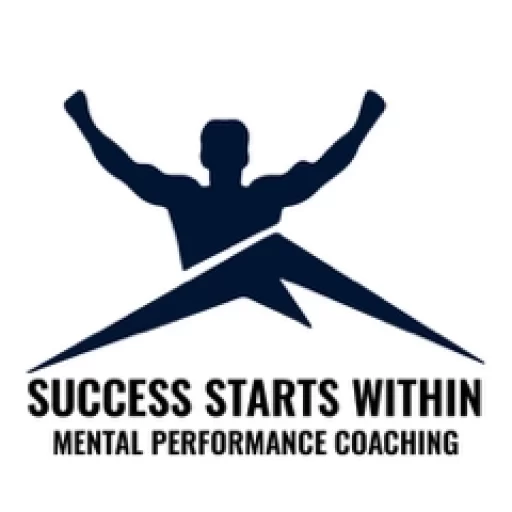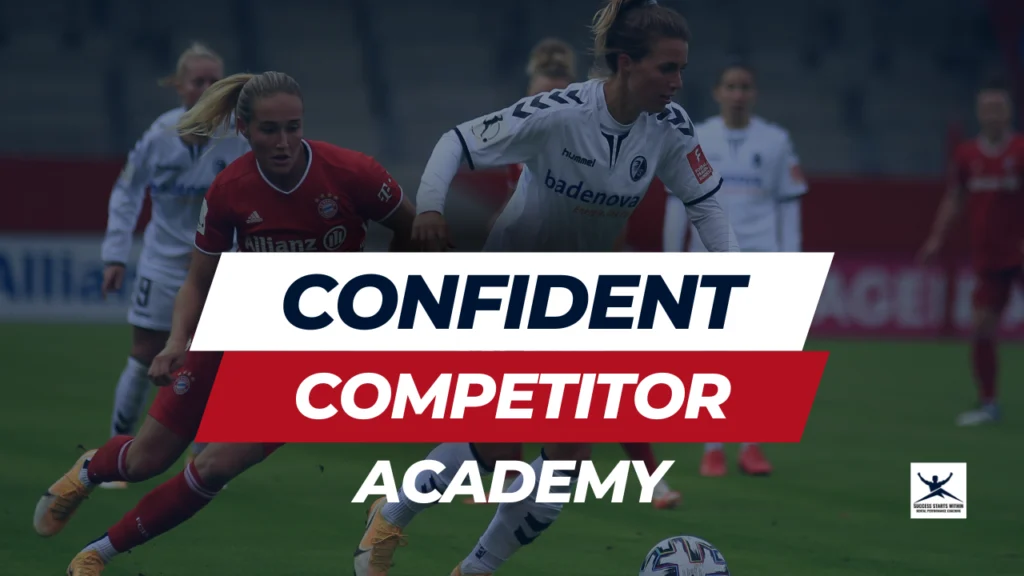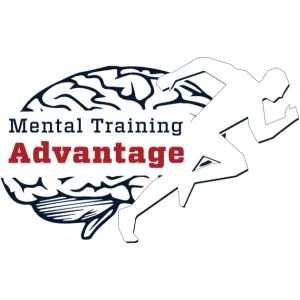What do you think is the most important piece to the puzzle of success?
Would you say it’s talent? What about grit, perseverance, or the ability to bounce back from failure? How about self-confidence? Do any of these get crowned as chief among traits a person needs to succeed?
Nope. Not quite.
While yes, each one of these traits is incredibly important to not only a successful athletic career or professional career, but a fulfilled life as well. There is still one characteristic, one aspect of the mind that rises above the rest.
As the title of this piece gives away, what I am referring to is self-image. The internal vision and set of beliefs you hold about yourself puts all other traits to shame when it comes to you attaining and sustaining success.
What makes me so sure about this? Well, while I’ve yet to perform formal research on the topic I have observed what happens both within myself and others when the outside world doesn’t align with the core beliefs on the inside.
My Secret Self-Image
Success is something I’ve dreamed of all my life. In sports, outside of sports, in relationships, you name it, the idea of succeeding and winning has always captured my imagination.
However, I’ve simultaneously developed this strange belief within myself that I am not actually capable of such success.
Strange, I know.
I noticed this a lot when I was younger when it came to baseball. I always felt inferior, or as though I couldn’t actually achieve the level I so desperately desired. Why this was, I’m not sure (though we will go into my suspicions later in the article).
What I do know is that for whatever reason, this faulty way of viewing myself did not align with the goals I had set. What ensued were always feelings of dread and anxiety.
That’s what we must deal with when our outside dreams and goals are backed by a self-image that fails to line up with our lofty expectations.
After putting forth a tremendous amount of effort to improve my mindset, building greater confidence and resilience, my thinking was that my self-belief had been altered for the better. While this was true, it was yet to be bullet proof.
Before I get into the story I’m about to share with you, I want to preface by saying I’m not sure if there is such a thing as a perfect self-image.
Though, I do think the belief you have in yourself, the way you see yourself has to outmatch your current situation if you wish to reach greater heights. If this isn’t the case, some unprecedented success will quickly fade away, which is exactly what I saw happen to myself this past season.
The past four months I have been living in Belgium playing professional baseball. All I can say of the experience is wow, what an amazing opportunity it’s been and one I will never forget.
Aside from all the people I met and adventures I experienced, there’s an aspect of my season that really stands out. One I know will be valuable to share with you.
Can I Sustain My Success?
The season began with a bang, and by bang, I truly mean a bang. The first weekend of games I hit a home run. It was the first time in my whole baseball career I began a season in such a way.
I was stunned to say the least, but also excited because I felt that must be a strong indication for how the season would go. And guess what? I was right.
During the regular season I hit eleven home runs, with five of them coming in one week (a span of six games). For me, this was incredible! I couldn’t believe how well I’d been playing, my team was in first place, and everything was going smoothly.
Well, turns out there was a part of me that truly couldn’t believe how well I’d performed, and likewise doubted such success could be sustained. What ensued was a slump that lasted the remainder of the season.
Once I recovered from the frustration and embarrassment I felt for letting my team down (we lost in the finals where I went hitless), a discovery was uncovered.
I realized the decline in my performance had little to do with technical skills or even confidence. I felt confident each and every time I went up to bat. In practice, my swing felt good, yet come game time, I continued to underperform and get increasingly frustrated at myself.
The true reason had to do with my self-image. While I had worked to improve other aspects of my mind, one key area, which was the way I honestly viewed myself in terms of success, lagged far behind.
I could not imagine the level I was playing could be continued. In fact, I felt myself thinking these very thoughts. However, I was too arrogant to realize how powerful they would be.
Luckily for my self-image, the outside world began to realign with the way I saw myself. The only problem was, this came at my own peril.
This illustrates just how important our self-image is. Before getting more into the specifics of how this decline took place, outlining the ways a misaligned self-image preys on our lives and performances, I think it’s useful to dive into what exactly defines self-image.
“The true reason had to do with my self-image. While I had worked to improve other aspects of my mind, one key area, which was the way I honestly viewed myself in terms of success, lagged far behind.”
Self-Image Defined
Self-image is far more than the reflection seen when looking in a mirror. As Courtney Ackerman puts it in her article on positivepsychology.com,
“Self-image refers to how we see ourselves on a more global level, both internally and externally.”
I love this description because it resonates so well with the example I provided from my own life. Self-image deals with how we see ourselves in relation to every aspect of our lives.
This means how we see ourselves in terms of our sporting life, professional lives, relationships, and as this article pertains, the level of success we are worthy of achieving.
Later on in her article, Courtney outlines three elements of self-image, these include:
- The way a person perceives or thinks of him/herself.
- The way a person interprets others’ perceptions (or what he thinks others think) of him/herself.
- The way a person would like to be (his ideal self).
My understanding of self-image and how I feel it pertains the most to success really aligns with these three elements.
The core of self-image problems arise when elements one and three don’t mesh.
If you hold onto this ideal vision of who you wish to become, yet, on a deeper level, you don’t actually see yourself as capable of such a feat, you open the door for many unwelcomed challenges.
What’s worse is when you set such aspirations for yourself in your athletic or performing life, only to have a self-image that keeps you from attaining those heights.
“If you hold onto this ideal vision of who you wish to become, yet, on a deeper level, you don’t actually see yourself as capable of such a feat, you open the door for many unwelcomed challenges.”
You Cannot Outperform Your Self-Image
Going back to the story I told you earlier about my recent struggles with self-image, you begin to see the difficulty we all have in outperforming the way we see ourselves.
My self-image, unbeknownst to me, centered around the idea that I could not sustain success. Possibly from years of self-doubt and viewing myself as less than capable, my outward performance quickly realigned with these internal beliefs.
At the core, I still doubted my own abilities. I doubted the fact I was actually as good as I was playing, and for sure could not imagine such a level of play could be sustained.
Well, I turned out to be right. Though, it seems more like a self-fulling prophecy than a signal that I wasn’t actually good enough. You see, when our self-image is linked to a level of performance below that which we are currently producing, harmony must be found.
Our minds hate contradiction. The psychological term for this is cognitive dissonance, meaning there is a mental conflict due to our internal beliefs not aligning with our actions.
So, what happens as a result? We are left with two choices: alter our self-image to line up with our actions or alter our actions to line up with our self-image. Which do you think is more common?
It’s the second one! Altering our self-image is hard, I mean really hard. It requires a combination of consistent effort and time. However, changing our actions, especially when discussing this in terms of performances, is much easier.
With one simple trait adopted, we can once again experience harmony within ourselves.
The Saving Grace Of Self-Sabotage
Look, I said it was easy, not fun.
When we find ourselves in a state of cognitive dissonance as a result of our self-image not aligning with our current level of performance, the best course of action is self-sabotage.
I’m not saying this will happen on a conscious level. In fact, it’s quite the opposite actually. Self-sabotage begins to creep in slowly but surely at a subconscious level.
On the surface, we do desire the success we are experiencing. It’s only the internal discord created by the cognitive dissonance that invites self-sabotage into the equation.
This is the phenomena I witnessed take place within myself this past season. Now, self-sabotage takes on many forms. For me, it turned out to manifest itself in the form of overthinking at the plate.
I began to question every aspect of my swing (something I used to do all the time in college). I found myself wondering whether my hands were in the right position, how my stance felt, what my load was like, and so on.
Even if you have no idea about baseball, I’m sure you can understand how unhelpful these worrisome thoughts were. The funny part was, nothing needed to be changed within my swing, since I was already generating incredible results.
So why was it that I became convinced the mechanics of my swing were off? It just so happened that was the easiest way for me to sabotage myself and regain harmony within my mind.
But I can promise you, I’d rather have kept up the cognitive dissonance if it meant I could have continued to perform so well.
However, that’s not what happened. In reality, the only way another outcome would have been possible was if I had first targeted my self-image and worked on improving the way I saw myself in relation to success.
How To Improve Your Self-Image
The only way to alter your self-image is through work. You have to put the time and effort into rewiring the way you see yourself. This is something I have regained motivation for and am currently pursuing on my own.
I realized the weakness I have in not truly viewing myself as capable of success (for now at least). But with diligent effort I know I will be able to alter my self-perception.
For you, if the way you see yourself does not align with your lofty goals or the ideal vision of who you want to be, similar work needs to be done on your part. But how can this be accomplished? How can we alter and improve our self-image?
As I said early in the article, this is an area of study I have yet to do too much formal research on (though it is one I am motivated to dive deeper into in the future).
However, our internal belief system consists of our self-talk and our deep seeded ideas about ourselves. From what I have learned through research and experience up to this point, there are two techniques I’ve landed on that should work to improve self-image.
These two techniques are visualization and journaling.
“The only way to alter your self-image is through work. You have to put the time and effort into rewiring the way you see yourself.”
Visualizing Your New Self
Visualization, also known as mental imagery or mental rehearsal, operates on the understanding that our minds respond to something imagined in a similar manner to that which happens in reality.
We can use this concept to rewire the way we see ourselves in relation to success.
Mine and your current self-images have resulted from years of seeing ourselves perform in a consistent way. If you hold onto the belief you are a clutch player, this will have developed from repeatedly seeing yourself succeed in crunch time moments.
If you are like me and see yourself as someone who cannot sustain success, years of seeing yourself fall short of your goals went into that currently held belief.
With this understanding, in order to alter our self-image, we must see ourselves repeatedly perform in a way that matches up with our desired perception. This is where visualization becomes so powerful.
By performing the visualization routine I am about to outline, you can feed your brain the memories of your acting in the manner that you wish. Over time, this should program your new self-image.
- Get into a comfortable position: The first step in the visualization process is getting yourself into a comfortable position you’ll be able to sit in for five to ten minutes.
- Close your eyes and bring your awareness to your breath: Now close your eyes and begin breathing slowly. Try your best to bring your attention to your breath. Focus on the sensation of your breath going in and out. Really center your focus in the here and now.
- Bring the scene into your mind: This will be a scene that exemplifies your new self-image. For instance, see yourself performing well over and over. See yourself as successful, whatever that means for you.
- Ground yourself with emotion: At the end of your visualization, be sure to ground yourself in a strong emotional state. This can be gratitude, success, confidence, or anything else positive you associate with your new self-image.
“Mine and your current self-images have resulted from years of seeing ourselves perform in a consistent way. If you hold onto the belief you are a clutch player, this will have developed from repeatedly seeing yourself succeed in crunch time moments.”
Writing Your Way To A New Self-Image
The concept of visualization works because it provides your mind with a repetitive process of seeing yourself as you wish to be. Over time, you begin to associate who you are with what you are imagining.
That is why mental imagery proves useful in altering your self-image. In addition to visualization, writing is also a powerful tool used to accomplish this shift.
There are a few ways writing can be utilized in improving your self-image. The first technique is a simple affirmation writing process. The practice is performed as follows:
- Decide on your ideal self-image.
- List out ten “I am” statements that convey the essence of your ideal self-image.
- Each morning/night rewrite these phrases in a journal.
- After you’ve written them out, reread each one (utilizing emotions just like step 4 from above).
Another writing technique is a little more fun (in my opinion), but also requires more work on a daily basis. It’s a creative writing exercise that allows you to design your ideal self each and every day.
It’s a simple practice really, and I would recommend it if you enjoy free writing. What you want to do is describe yourself in paragraph form. Outline your ideal self-image, in the present tense, describing who you are and how you act.
You can have as much fun as you want with this. Maybe each day you act as if you’re in a new situation or environment. Really outlining how your new self responds in such situations.
The reason this works so well is because you are creatively crafting who you wish to be. The more you do this, and associate yourself with what you’re writing, the closer your self-image will align with the character you are describing.
Final Thoughts
You cannot outperform your self-image.
No matter how hard you try, your mind will always seek harmony. The cognitive dissonance created when your internal beliefs do not align with your actions will result in one of two things happening.
Either your actions must change, or your internal perception must be altered. The sad truth is, shifting the way we perform is much easier than changing our self-image. This is where self-sabotage comes into play.
However, if you want to sustain success, the opposite must occur. This means you need to begin work on changing the way you see yourself.
Altering your self-image can be accomplished through the application of mental imagery and a daily writing practice. Give these two techniques a try and watch how the way you view yourself begins to shift.
Does your self-image align with your goals? Let me know in the comments below.
If you have any questions please don’t hesitate to reach out to me. And if you enjoyed the article, please share it with others so they can learn the importance of improving their self-image.
Thank you for reading and I wish you the best of success in all that you do.





